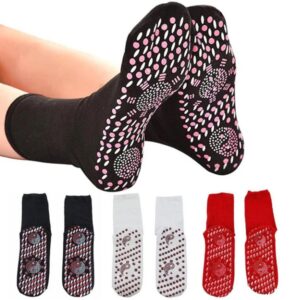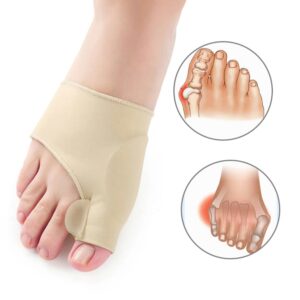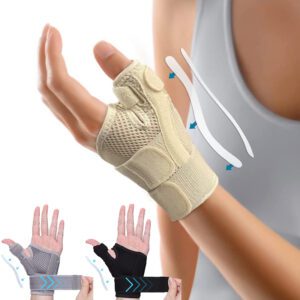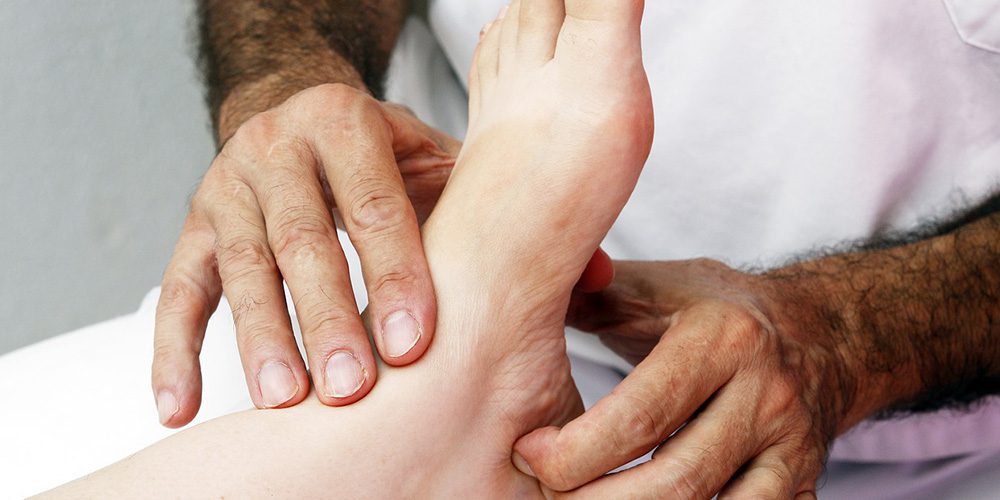Running. It’s a journey, a passion, a challenge. And for some of us, it comes with an unwelcome companion – plantar fasciitis. This foot condition can be a real party pooper, whether you’re a veteran marathoner or a rookie just hitting the track. But hey, don’t let it put a damper on your running dreams.
In this article we’re going to take a deep dive into the world of running, hand in hand with plantar fasciitis. We’re here to equip you with a toolkit of knowledge and practical strategies to keep you moving forward, one stride at a time.
Definition and Overview of Plantar Fasciitis
Before we hit the road, let’s get to know our uninvited guest a little better. Plantar fasciitis – it’s a mouthful, isn’t it? This pesky foot condition is more common than you might think. It’s all about the plantar fascia – a sturdy band of tissue that’s like a bridge spanning from your heel bone to your toes, right across the bottom of your foot. When this bridge gets inflamed and irritated, that’s when plantar fasciitis crashes the party.
This condition typically causes stabbing or burning pain in the heel or arch area, especially with those initial steps in the morning. The exact cause of plantar fasciitis is often multifaceted.

It can be triggered by repetitive strain on the plantar fascia due to activities like running, excessive standing or walking, as well as wearing improper footwear that lacks adequate support. Certain risk factors such as obesity, high arches or flat feet, tight calf muscles, and even age can increase the likelihood of developing this condition.
Importance of Staying Active Despite the Condition
You might think that having plantar fasciitis means bidding farewell to your running shoes indefinitely. However, staying active can actually play a crucial role in managing and even alleviating the symptoms associated with this condition. Maintaining an active lifestyle helps improve blood circulation to your feet while strengthening muscles around them.
Regular exercise also aids in weight management which reduces stress on your feet. Moreover, engaging in physical activity releases endorphins – the feel-good hormones – that can help relieve pain and elevate your mood.
So, even though it may seem counterintuitive, incorporating running or other forms of exercise into your routine can be beneficial if done with caution. The key lies in understanding your body, managing the condition effectively, and making necessary adjustments to minimize discomfort while still pursuing your fitness goals.
Now that we’ve set the stage, let’s dive deeper into exploring how you can navigate the world of running with plantar fasciitis. Keep reading for valuable tips and precautions to make your running experience as comfortable as possible!
Understanding Plantar Fasciitis – Causes and Risk Factors
Let’s unravel the mystery of plantar fasciitis, often dubbed as ‘jogger’s heel’. This common foot ailment triggers pain and inflammation in the plantar fascia – that’s the sturdy band of tissue that ties your heel bone to your toes. But what makes plantar fasciitis gatecrash our foot party?
Well, there are a handful of culprits. One biggie is putting too much or repetitive stress on the plantar fascia. This could happen from activities that keep your feet busy, like running, dancing, or even standing for long hours.
But that’s not all. There are other risk factors lurking in the shadows. Got high arches or flat feet? You might be more susceptible. Wearing shoes that skimp on arch support or cushioning can also invite plantar fasciitis. Carrying extra weight or being obese adds more strain to your feet, upping the risk. And let’s not forget the sneaky age-related changes in foot mechanics that can play a part too.
Symptoms and Diagnosis
The primary symptom of plantar fasciitis is intense pain in the bottom of the foot near the heel. This pain is typically sharp and stabbing when you take your first steps after waking up in the morning or after prolonged periods of rest. As you continue walking or running throughout the day, the pain may subside but could return after periods of rest again.
In some cases, swelling and tenderness may also be present along with a limited range of motion in the affected foot. To diagnose plantar fasciitis accurately, healthcare professionals usually perform a physical examination combined with a detailed patient history assessment.
During the examination, they will look for signs such as point tenderness along the plantar fascia and assess any potential biomechanical abnormalities contributing to this condition. Imaging tests like X-rays may be ordered to rule out other possible causes like stress fractures.
Treatment Options and Management Strategies
The good news is, there’s a whole array of treatment strategies at our disposal to effectively manage plantar fasciitis. The main aim? To dial down the pain and inflammation and kickstart the healing process of the affected tissues.
First up, we usually turn to non-surgical strategies. These are the go-to, frontline treatments and might include simple steps like taking a breather (rest), applying a cold compress (ice therapy), or reaching for over-the-counter pain relievers like nonsteroidal anti-inflammatory drugs (NSAIDs).
Physical therapy is a key player in the plantar fasciitis management team. Therapists often roll out a regimen of stretching and strengthening exercises to boost flexibility, stability, and muscle balance in your foot and lower leg. They might also bring out the big guns like ultrasound therapy or extracorporeal shockwave therapy to speed up healing.
But what if these conservative treatments don’t hit the mark? For more stubborn cases, we might need to up the ante with medical interventions like corticosteroid injections or custom orthotics. Surgery is usually our last resort, reserved for those cases that just won’t play ball with conservative treatments after several months.
Remember, plantar fasciitis is a personal journey, and everyone’s experience is unique. That’s why treatment plans should be custom-made to fit the specific needs of each patient. Regular check-ins with healthcare professionals are key to keep track of progress and tweak the treatment plan as needed.
Armed with a solid understanding of what sparks off plantar fasciitis, spotting its symptoms early on becomes a game-changer for timely intervention. By embracing the right treatment options and putting effective management strategies into action, you can ease the discomfort of this condition and keep your running dreams alive.
Running with Plantar Fasciitis: Tips and Precautions
Before you hit the ground running with plantar fasciitis, it’s a smart move to touch base with a healthcare professional. Sure, running has a ton of perks, but we need to make sure it won’t fan the flames of your condition or invite new injuries.
A healthcare pro, like a doctor or physical therapist, will size up the severity of your plantar fasciitis and dish out advice tailored to your unique needs. During your chat, they might point you towards specific treatments or exercises to dial down the pain and kickstart the healing process.
They might also guide you to tweak your training – think intensity, duration, or frequency – to help you build strength gradually while keeping strain on the affected area in check. Remember, no two cases of plantar fasciitis are the same, so getting professional advice can help you make savvy decisions about lacing up your running shoes safely.
Choosing appropriate footwear for running with plantar fasciitis
Selecting proper footwear plays a pivotal role in managing plantar fasciitis while continuing to run. When searching for running shoes specifically designed for this condition, several features need consideration. Firstly, cushioning is essential as it helps absorb shock and reduces impact on the heel and arch—areas prone to discomfort when suffering from plantar fasciitis.
Next comes arch support—a critical factor in maintaining proper foot alignment and reducing strain on the plantar fascia ligament. Look for shoes with built-in arch support or consider custom orthotic inserts that cater to your specific foot structure.
Stability features are equally significant in providing adequate support during runs. Shoes should have a firm heel counter (the back part of the shoe above the outsole) that keeps your foot stable and prevents excessive pronation (inward rolling) or supination (outward rolling), which can aggravate plantar fasciitis.
Cushioning, arch support, and stability features to look for in running shoes
When examining running shoes for plantar fasciitis, prioritize cushioning, arch support, and stability features. Opt for shoes with ample cushioning in the heel and midsole areas to absorb shock effectively during foot strike.

Look for materials like gel or responsive foam that provide excellent shock absorption without compromising comfort. Arch support is crucial as it helps distribute weight evenly across the foot and reduces stress on the plantar fascia.
Choose shoes with built-in arch support or consider orthotic inserts that cater to your unique arch type (high, medium, or low). Stability features can make a significant difference in maintaining proper foot alignment while running.
Seek out shoes with a firm heel counter that prevents excessive pronation or supination. Additionally, look for models with wider bases to enhance stability during movement.
Remember that finding the right shoe is a personal process. Take your time trying on different brands and styles to find the one that offers optimal comfort and support for your feet.
The role of orthotic inserts in providing additional support
Orthotic inserts can be an excellent addition to your running routine when dealing with plantar fasciitis. These inserts are specifically designed to provide extra cushioning, arch support, and stability—reducing pain and promoting proper foot alignment during physical activity. Depending on your condition’s severity or personal preference, there are two types of orthotic inserts you can consider: over-the-counter (OTC) or custom-made ones.
OTC orthotics are readily available at most sporting goods stores or pharmacies without a prescription. They offer a more affordable option compared to custom-made alternatives while still providing considerable benefits.
However, keep in mind that OTC inserts may not cater precisely to your unique foot structure or address specific issues. Custom-made orthotics, on the other hand, are precisely crafted to match your feet’ contours and address your specific needs.
While more expensive, these inserts offer a higher level of support and can significantly improve comfort during running. If you have tried OTC orthotics without desired results or have severe plantar fasciitis, considering custom-made inserts might be worth discussing with your healthcare professional.
Remember that consulting with a healthcare professional is essential when deciding which type of orthotic insert is most suitable for you. They will assess your condition and provide expert recommendations to ensure you make an informed decision that supports your foot health and running goals.
Warm-up Exercises for Runners with Plantar Fasciitis
When dealing with plantar fasciitis, it’s crucial to limber up those tight muscles before hitting the road. Regular stretching can help alleviate pain and improve flexibility. Two fantastic stretches that target your feet and calves are calf stretches and toe stretches.
Calf Stretches:
1. Standing Calf Stretch: Stand facing a wall with one foot slightly behind the other. Place your hands on the wall for support, keeping your back straight. Gently lean forward while bending your front knee, feeling the stretch in the calf of your back leg.
Hold for 20-30 seconds on each leg. 2. Wall Calf Stretch: Stand near a wall or sturdy object that you can lean against for support.
Extend one leg behind you, keeping it straight, while leaning forward into the wall until you feel a stretch in your calf muscle. Hold for 20-30 seconds on each leg.
3. Towel Calf Stretch: Sit on the floor with both legs extended in front of you. Loop a towel or resistance band around the ball of one foot, holding onto both ends of the towel firmly.
Gently pull back towards you until you feel a stretch in your calf muscle. Hold for 20-30 seconds on each leg.
Toe Stretches:
1. Towel Scrunches: Place a small towel flat on the floor and use only your toes to scrunch it towards you until it is completely bunched up underfoot. Repeat this exercise several times to strengthen and stretch toe muscles.
2.Marble Pickups: Scatter marbles or small objects around on the floor and use only your toes to pick them up one at a time, placing them in a separate container. This exercise can target the muscles in your feet, improving strength and flexibility.
Strengthening exercises to improve foot stability
To enhance foot stability and improve overall strength, incorporating specific strengthening exercises into your routine is essential. Two effective exercises for this purpose are towel curls or toe raises and toe taps or toe curls.
Towel Curls or Toe Raises:
1. Sit on a chair with your feet flat on the ground. Place a small towel beneath your toes and scrunch it towards you using only your toes, pulling it back towards you as much as possible.
Repeat this exercise for several repetitions to strengthen the muscles in your feet. 2. Stand barefoot with your heels hanging off a step or ledge, ensuring that you have something sturdy to hold onto for balance.
Slowly raise up onto the balls of your feet by flexing your calves and toes, then lower back down slowly. Repeat this exercise for several repetitions to strengthen calf muscles as well as the plantar fascia.
Toe Taps or Toe Curls:
1. Sit comfortably with both feet flat on the floor or use a resistance band around the balls of both feet for added resistance if desired. Lift all toes off the ground while keeping heels grounded, then tap each toe individually on the floor while maintaining control over their movement. Alternate between tapping each toe individually and curling all toes together towards the sole of foot.
Repeat this exercise for several repetitions to increase coordination and strength in foot muscles. By incorporating these stretches and strengthening exercises into your warm-up routine, you’ll help prepare your body for running with plantar fasciitis more effectively while minimizing discomfort and reducing potential injuries during exercise.
Running Techniques for Minimizing Discomfort
Adjusting Stride Length: Finding the Sweet Spot
Finding the right stride length can make all the difference when it comes to running with plantar fasciitis. By taking shorter strides, you can reduce the impact on your heel and lower your risk of aggravating the condition. A shorter stride means your feet spend less time in contact with the ground, reducing the amount of stress on your plantar fascia.
Experiment with different stride lengths during your runs to find what feels most comfortable for you. Pay attention to how your feet land and aim for a midfoot strike rather than striking with your heel.
Foot Strike Pattern: The Art of Landing Lightly
In addition to adjusting your stride length, paying attention to your foot strike pattern can also help alleviate discomfort while running with plantar fasciitis. Instead of landing heavily on your heels, focus on landing lightly and evenly across the middle part of your foot or even towards the balls of your feet.
This distributes the impact forces more evenly throughout your foot, reducing strain on the plantar fascia. Practice a softer landing by imagining that you are trying to sneak up on someone without making a sound – this will encourage a lighter and more gentle foot strike.
The Importance of Rest: Allowing Your Feet Time to Heal
When dealing with plantar fasciitis, it’s crucial not to underestimate the power of rest days in aiding recovery. While staying active is important, overdoing it can worsen symptoms and delay healing. By incorporating regular rest days into your training schedule, you give your feet ample time to recover from micro-tears in the plantar fascia caused by repetitive stress from running.
Use these rest days wisely by engaging in low-impact activities or simply taking a break to relax and rejuvenate. Remember, rest is not a sign of weakness but rather a strategic move towards long-term pain reduction and healing.
Listen to Your Body: Recognizing Signs of Overexertion
When designing your training plan, it’s crucial to pay attention to your body’s signals. If you experience increased pain, swelling, or discomfort during or after a run, it may be an indication that you need more rest. Pushing through the pain can aggravate the condition and lead to further injury.
Be mindful of any changes in symptoms and adjust your training schedule accordingly. Incorporating cross-training activities like swimming or cycling on rest days can help maintain cardiovascular fitness while giving your feet the break they need.
Gradual Progression: Building Up Without Overdoing It
As tempting as it may be to jump back into intense running sessions after a period of rest, it’s essential to ease back into training gradually. Returning too quickly to high mileage or intensity can exacerbate plantar fasciitis symptoms. Start with shorter distances and slower paces before gradually increasing both time and intensity.
By allowing your feet time to adapt and strengthen gradually, you reduce the risk of re-injury while still making progress toward your running goals. Remember, every individual is unique, so finding the right running techniques for minimizing discomfort with plantar fasciitis may require some trial and error.
Pay attention to how your body responds to different adjustments in stride length and foot strike patterns while incorporating sufficient rest days into your training schedule for optimal recovery. By listening to your body’s signals and making necessary modifications, you can continue enjoying the benefits of running while managing plantar fasciitis effectively—maintaining an active lifestyle without sacrificing comfort!
Cross-training Options for Runners with Plantar Fasciitis
When dealing with plantar fasciitis, it’s crucial to give your feet time to heal and recover. While running may be your passion, it’s important to incorporate cross-training activities into your routine that won’t aggravate the condition further. Low-impact exercises not only provide a break from repetitive stress on the feet but also help maintain cardiovascular fitness and overall strength.
Swimming or water aerobics
One excellent cross-training option for runners with plantar fasciitis is swimming or engaging in water aerobics. The buoyancy of the water reduces the impact on your feet while providing a full-body workout. This low-impact exercise allows you to maintain cardiovascular endurance, improve muscle tone, and increase flexibility without putting excessive strain on your plantar fascia.
In addition to being gentle on your feet, swimming engages various muscle groups throughout your body. It helps strengthen not only your legs but also your arms, shoulders, and core muscles.
Whether you choose freestyle or backstroke, swimming offers a fantastic way to keep fit while giving your plantar fascia some well-deserved rest. Water aerobics is another excellent option worth considering.
These classes often involve different movements such as leg kicks, arm exercises, and gentle jumping jacks, all performed in waist-deep water. Similar to swimming, water aerobics provides a low-impact workout that increases cardiovascular fitness and strengthens muscles without exacerbating plantar fasciitis symptoms.
Cycling or using an elliptical machine
If you’re looking for an activity that mimics running but has less impact on the feet, cycling may be just what you need. Whether indoor on a stationary bike or outdoors, cycling is a low-impact exercise that allows you to maintain a good cardio workout without irritating your plantar fascia.
It strengthens the lower body muscles, including quadriceps, hamstrings, and calves, while alleviating stress on the affected area. Additionally, using an elliptical machine can be a great alternative for runners with plantar fasciitis.
This equipment provides a smooth and fluid motion that mimics running without the impact of landing on hard surfaces. The elliptical machine engages both upper and lower body muscles while reducing strain on your feet and maintaining cardiovascular fitness.
Both cycling and using an elliptical machine offer the advantage of adjustability. You can control the resistance level and intensity based on your comfort level and gradually increase it as your condition improves.
Remember to maintain proper form during these activities to ensure optimal benefits while minimizing any potential discomfort. By incorporating low-impact exercises like swimming, water aerobics, cycling, or using an elliptical machine into your routine, you can continue staying active even with plantar fasciitis.
These alternatives allow you to maintain endurance levels while giving your feet much-needed relief from high-impact activities like running. Experiment with different cross-training options to find what works best for you in terms of enjoyment, pain management, and overall fitness goals.
Recovery Strategies after Running Sessions
After an invigorating run, it’s essential to give your body a chance to cool down and recover. Cooling down helps gradually lower your heart rate and prevents blood from pooling in your legs.
Take a few minutes to walk or slow jog at a relaxed pace. This gentle exercise aids in flushing out lactic acid and promotes circulation, reducing the risk of stiffness and muscle soreness.
Additionally, incorporating dynamic stretches during this phase can aid in alleviating tension and tightness in the muscles. Focus on stretching your calves, hamstrings, quads, and hip flexors to maintain flexibility and prevent any post-run discomfort.
Final Words
Running with plantar fasciitis requires careful consideration of both the condition’s limitations and your love for running. While it may seem challenging at first, with proper management strategies, you can continue to pursue your passion without exacerbating the discomfort.
Remember to consult with a healthcare professional for personalized advice tailored to your specific needs. By selecting supportive footwear, following targeted warm-up exercises, adjusting running techniques, incorporating cross-training activities as needed, and implementing appropriate recovery strategies like cooling down after each session – you’re setting yourself up for success on this unique fitness journey.
So lace up those shoes (the right ones!), embrace an optimistic mindset filled with determination and perseverance, because even though plantar fasciitis may present its challenges along the way – you possess the resilience needed to overcome them. Happy running!





















